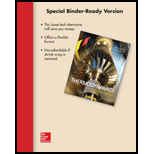
Concept explainers
a)
The mass flow rate of the cooling water.
a)
Answer to Problem 138RP
The mass flow rate of the cooling water is
Explanation of Solution
Apply the dry air mass balance on the cooling tower.
Here, mass flow rate of air at inlet and outlet is
Apply the water mass balance on the cooling tower.
Here, mass flow rate of water at state 3 and 4 is
Apply the energy balance on the cooling tower.
Apply steady flow energy balance equation on the cooling water.
Here, rate of heat removal is
Conclusion:
Refer Table A-4, “Saturated water – Temperature table”, obtain the enthalpy
Refer Table A-4, “Saturated water – Temperature table”, obtain the enthalpy
Refer Fig A-31, “Psychrometric chart at 1 atm total pressure”, at dry bulb temperature
Refer Fig A-31, “Psychrometric chart at 1 atm total pressure”, at temperature
Substitute
Substitute 70 MW for
Thus, the mass flow rate of the cooling water is
b)
The volume flow rate of air into the cooling tower.
b)
Answer to Problem 138RP
The volume flow rate of air into the cooling tower is
Explanation of Solution
Write the expression to obtain the volume flow rate of air into the cooling tower
Conclusion:
Substitute
Substitute
Thus, the volume flow rate of air into the cooling tower is
c)
The mass flow rate of required makeup water.
c)
Answer to Problem 138RP
The mass flow rate of required makeup water is
Explanation of Solution
Write the expression to obtain the mass flow rate of required makeup water
Conclusion:
Substitute
Thus, the mass flow rate of required makeup water is
Want to see more full solutions like this?
Chapter 14 Solutions
Loose Leaf for Thermodynamics: An Engineering Approach
 Elements Of ElectromagneticsMechanical EngineeringISBN:9780190698614Author:Sadiku, Matthew N. O.Publisher:Oxford University Press
Elements Of ElectromagneticsMechanical EngineeringISBN:9780190698614Author:Sadiku, Matthew N. O.Publisher:Oxford University Press Mechanics of Materials (10th Edition)Mechanical EngineeringISBN:9780134319650Author:Russell C. HibbelerPublisher:PEARSON
Mechanics of Materials (10th Edition)Mechanical EngineeringISBN:9780134319650Author:Russell C. HibbelerPublisher:PEARSON Thermodynamics: An Engineering ApproachMechanical EngineeringISBN:9781259822674Author:Yunus A. Cengel Dr., Michael A. BolesPublisher:McGraw-Hill Education
Thermodynamics: An Engineering ApproachMechanical EngineeringISBN:9781259822674Author:Yunus A. Cengel Dr., Michael A. BolesPublisher:McGraw-Hill Education Control Systems EngineeringMechanical EngineeringISBN:9781118170519Author:Norman S. NisePublisher:WILEY
Control Systems EngineeringMechanical EngineeringISBN:9781118170519Author:Norman S. NisePublisher:WILEY Mechanics of Materials (MindTap Course List)Mechanical EngineeringISBN:9781337093347Author:Barry J. Goodno, James M. GerePublisher:Cengage Learning
Mechanics of Materials (MindTap Course List)Mechanical EngineeringISBN:9781337093347Author:Barry J. Goodno, James M. GerePublisher:Cengage Learning Engineering Mechanics: StaticsMechanical EngineeringISBN:9781118807330Author:James L. Meriam, L. G. Kraige, J. N. BoltonPublisher:WILEY
Engineering Mechanics: StaticsMechanical EngineeringISBN:9781118807330Author:James L. Meriam, L. G. Kraige, J. N. BoltonPublisher:WILEY





